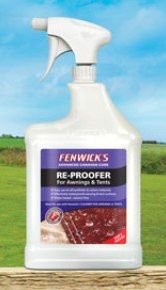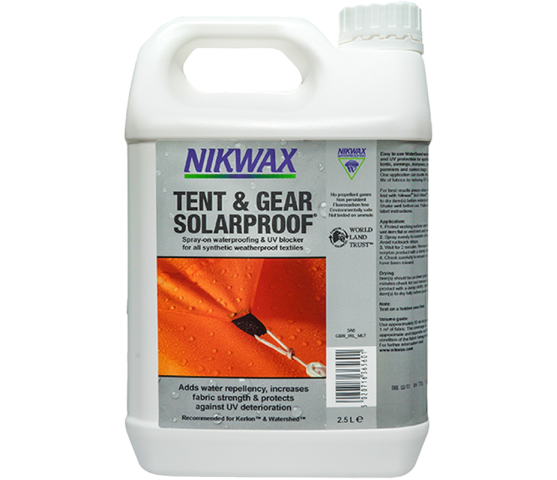How to proof your tent
Proofing a tent is a great thing to do to help extend the lifetime of your tent or fix some leaking problems! Here’s a quick guide on how to do it correctly.
We stock a number of proofing options; Fenwix, Nikwax, Fabsil and Kampa. We recommend Fabsil, we love it here at Attwoolls and it gets the job done perfectly! It’s brilliant for all types of tents, does the job nicely and neatly, and you can use it for maintenance (think of it as adding sun cream to your tent to help it last a little bit longer), or to help with a leaking issue.
Firstly, make sure you have the tent erected, so that everything is in place and sitting where it will sit to allow the treatment process to dry in place.
There are 2 main methods; you can either paint it on with a brush, which is a more thorough but time-consuming method. You will need a tin, and a nice big brush to over the material, with a focus on the seam and/or the area of issue. Alternatively, you can decant it into a spray and spray then wipe all the surfaces. Aerosol versions are far easier to apply, especially if you have a small area. However, it is difficult to get consistency especially if its windy. But it does make your life easier!
If you can, we recommend doing the roof section before the tent is up. If you do the roof first when the tent is lying on the ground before you put it up it has longer to dry, and is easier for you to cover all areas. You will however need a dry day, and plenty of time for it to dry whilst it is still erected. This is easier with a polyester tent as it will sit directly on top of the fabric, with a canvas tent you will need longer and to potentially do it twice as it will sink into the fabric.
Depending on which brand you use, there will be recommendations as to how long it will last, and how much surface area per litre it will cover. Cotton fabrics do require more as they absorb more, so a thicker application with a brush would be best.
When proofing the seams of your tent, we do recommend you use seam sealer. You can do it internally and externally, but if you’re doing it internally then we do not recommend using a spray. The sealer is like a glue, make sure you don’t get it on your hands! You’ll need a nice layer over the top of the seam with a brush, and it gives a smooth, clear finish. You need to ensure good ventilation, that you’re wearing gloves, and taking breaks. You also need to do this when the tent is up so that it can set in the right place. It is not as necessary with a cotton tent, but a great thing to do for polyester tents!
However, if the tape sealing is coming off your tent and the fabric is starting to feel thin, it might be worth investing in a new tent!
For a more comprehensive guide, check out the video above!








